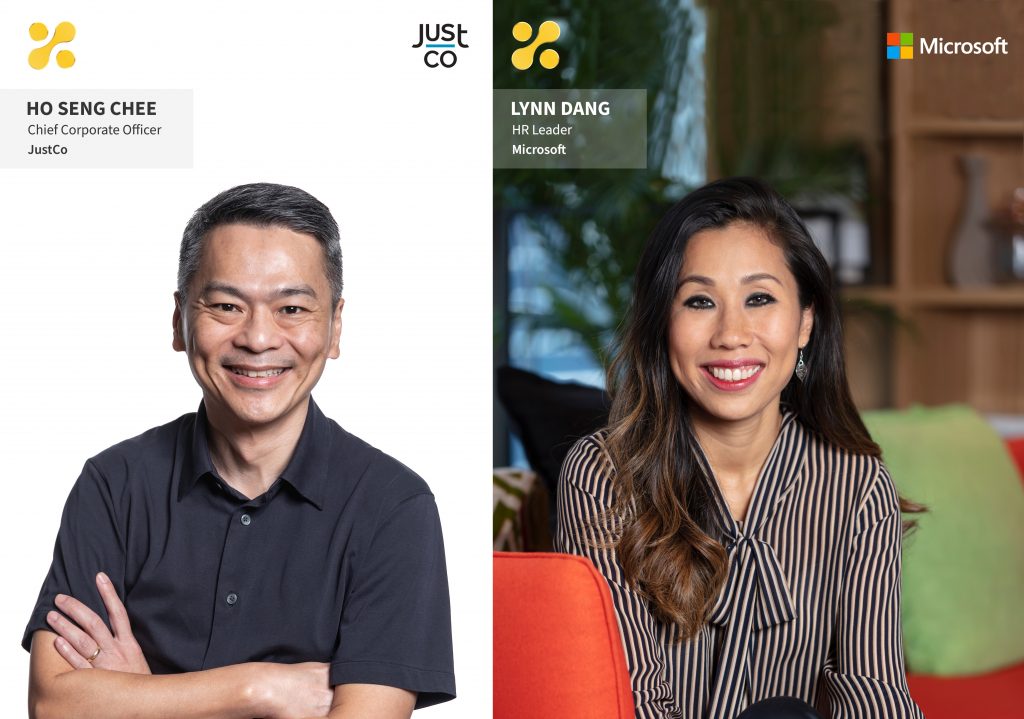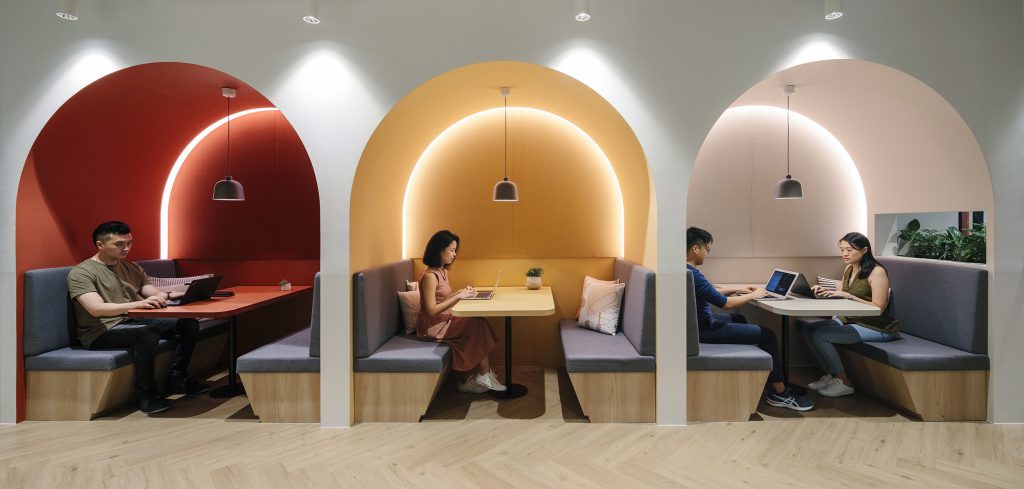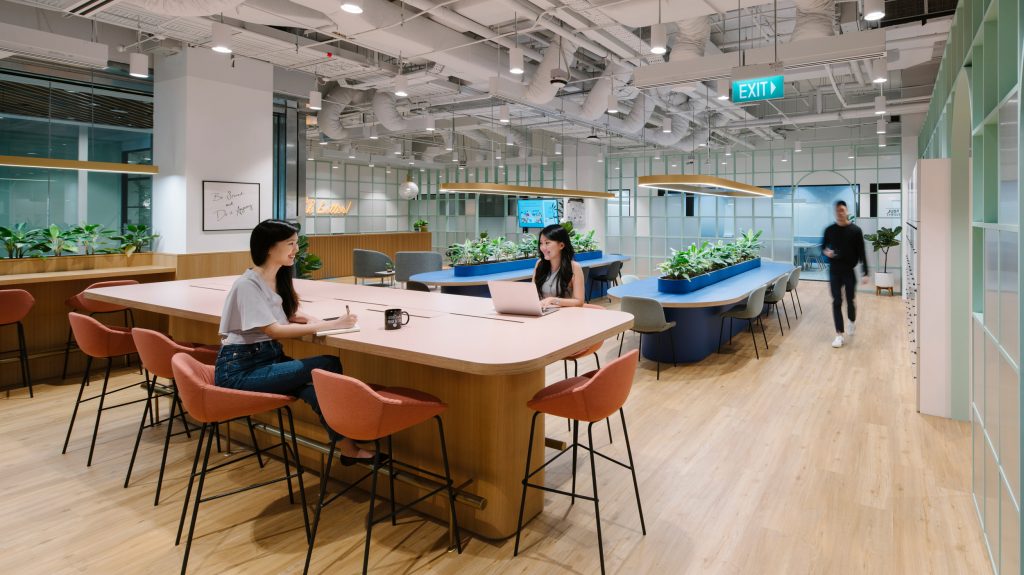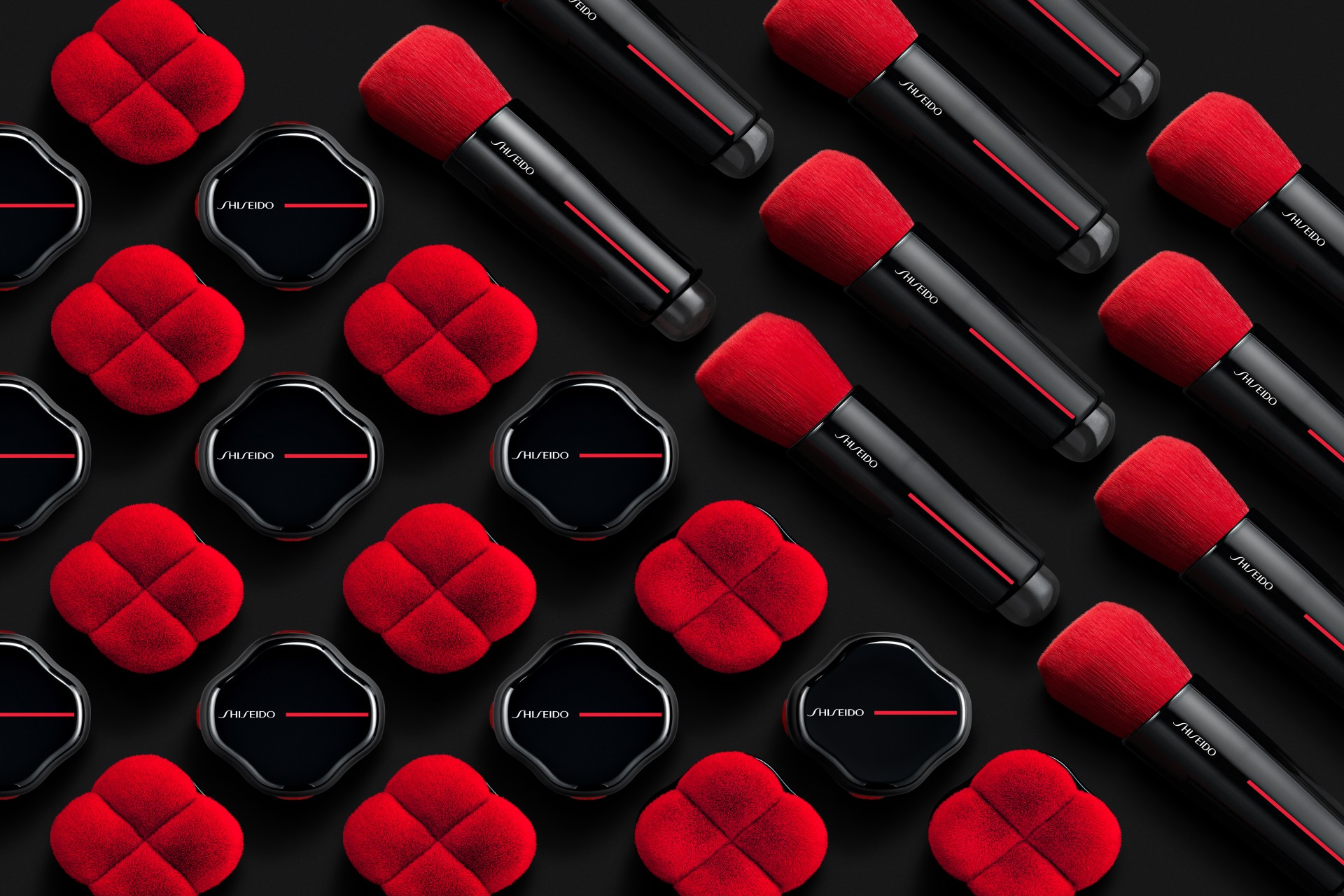Reimagining Workplaces: Blurred Regional Boundaries
Share

Much has changed over the past two years – including work, the activity that easily occupies the largest proportion of our time. The hybrid work arrangement that used to be practiced only by a few companies now blankets companies across the globe.
Research from the Microsoft Work Trend Index indicates that over 82 percent of workers in Singapore want flexible remote options to stay, with over 62% of local business leaders being more likely to redesign office space for hybrid work. Both of these point to the fact that flexible and hybrid work is here to stay.
In exploring what it means to operate effectively in this new configuration of workspaces, we have gathered the views of several business leaders, including an interview with Mr. Ho Seng Chee, Chief Corporate Officer at JustCo, Asia’s leading flexible workspace provider, and Ms. Lynn Dang, HR Leader at Microsoft Singapore.

Question: As a starter, how has work changed? And are geographical limits a thing of the past?
Mr. Ho: Businesses everywhere are exploring hybrid work arrangements that combine work from home (WFH), fixed offices, flexible offices, and other office alternatives. While we are not at the stage where geographical limits have become immaterial, more companies and workers are warming to the idea that team members need not be co-located at the same place to be productive as a unit.
The increasing sophistication of communication tools and workspace technologies will further liberate companies and workers from having to operate within fixed geographical borders.
From the employers’ perspective, ‘working from anywhere’ or hybrid working has proven to be a viable model. While physical presence and interaction remain important, employers’ attention has now shifted from “coming to the office” to “delivering real outcomes and results”.

Similarly, from the employees’ perspective, collaborating across borders is already second nature for many knowledge workers. In this new future of work, hybrid workplace arrangements where employees can determine where and how they want to work for the day, will not only be the norm, but also the key to a company’s success.
Question: What are your challenges during this time working in your role compared to the past?
Ms. Dang: The first thing is building an inclusive culture for a hybrid future of work to ensure employees have the same employee experience, no matter where they are. This also includes effectively managing teams across different locations while ensuring every employee receives the support they need.
Secondly, it is to combat digital exhaustion. Our Microsoft Work Trend Index research indicates that 58% of workers in Singapore feel overworked and that 49% feel exhausted. As employees blur the lines between work and life, there is now a greater need to understand how to reduce employee workloads, embrace a balance of synchronous and asynchronous collaboration, and creating a culture of inclusiveness and support, where breaks are encouraged and respected.
Apart from having shorter meetings, no-meeting Mondays, well-being days, and personal days for employees on the first Friday of every month, Microsoft is looking into how technology can play a part in helping employees strike a balance between work and life while easing digital burnout.
For example, we have integrated Headspace into Microsoft Teams. It is a mindfulness app that allows employees to take 10 minutes a day to disconnect from their devices and recharge by following a set of guided meditations, breathing exercises, and mindfulness practices.

Question: With the pandemic, more businesses are beginning to explore the option of a co-working environment instead of a fixed office. What are the pros and cons of working in a co-working environment and how the company culture can be built in this environment?
Mr. Ho: Building a positive company culture in a co-working space is not very different from building it in a traditional workspace. In fact, the energy and vibrancy of a coworking environment can complement company culture!
Flexible workspaces are refreshingly different when compared to traditional workspaces. They offer benefits that traditional offices may be unable to provide. For example, networking opportunities, a community-oriented environment, a cost-effective workplace, and boundless inspiration from other co-workers.

On top of the community events organized by the co-working space provider, companies should also plan their own events and create company traditions that will form the basis of their unique culture.
Question: What is required to succeed in building company culture and employee engagement as we evolve the new workplace in ASEAN?
Ms. Dang: Organizations need to create a plan to empower people for extreme flexibility. Besides that, it’s also crucial to invest in space and technology to bridge the gap between the physical and digital worlds.
As we reimagine the future of business through hybrid work, employee experiences must be a priority to attract and retain talent. This starts with fostering a culture of inclusion that is respectful of work-life balance that begins at the top of any organization and cuts through to all parts of the organization.
In addition to the interview, Mr. Ho and Ms. Dang have also provided more insights during a discussion with other leaders at LITDISCOvery 2021, a career symposium organized by Young National Trade Union Congress (NTUC) and supported by Influential Brands.
Tackling the question of what is the optimal structure for hybrid working, Mr. Ho raised two paramount factors for companies to consider – 1) Type of business 2) Maturity of the organisation.
“The type of business that you are in dictates the pace that you need to move at, from your day-to-day activities to the targets you need to set. It may be quarterly, weekly or daily,” he said. As such, organisations with a fast-paced business environment might find having a greater mix of the physical work arrangement to be more effective, as it cuts down on the time spent corresponding back and forth.
On the maturity of the organisation, start-ups tend to comprise a younger population. Based on experience, Mr. Ho explained that it could be very challenging to onboard new and young employees with relatively little life experience virtually.

Mr. Mohan Belani, Co-founder and CEO at e27, Asia’s largest Tech media platform shared how interaction being an inevitable slice of culture is not to be neglected, even when work is virtual. He said, “There needs to be a level of forced interaction and time allocated for people to get to know each other better. In our case, that 10 minutes before the meeting doesn’t really work. So, we actually set out two to three-hour blocks for activities and games; things that will allow people to put aside work completely to be mentally and physically present in the social activities.”
Besides being more intentional in maintaining and building connectivity among co-workers, Mr. Belani also reminded that the remote work arrangement has called for greater transparency in communication and information sharing within organisations.
“Previously, a lot of things might have been within people’s memories, but this time around, we started to create either documentations, playbooks, or information repositories. And we kept them as open and transparent as possible,” he remarked.
Mr. Desmond Choo, Assistant Secretary-General at NTUC who further weighed in on the optimal structure of work going ahead said, “It is going to be one that is driven by the outcome and function that companies are going to arrive at. For example, I find that online collaboration for creative solutions, especially in my space, is fairly difficult. It is a lot easier for tracking, fast decision making, and reporting type of sessions.
“If that particular work is going to be heavier on creative work solutions, we might want to bring people back to work on those things. But it all has to be balanced with a certain code of understanding. It means you’re not just going to call somebody and say it’s 11 pm, let’s have a zoom session. It is not going to work. I think that creates more digital pain or fatigue”
Concurring with Mr. Choo, Mr. Ho advised, “The single largest source of stress is the inability to control what you are doing. So, if there is one thing that businesses can do to relieve that pressure, it is to have clear expectations of the tasks, the result, and timeframe, in which the results are supposed to be delivered.”
Finally, the blurred boundaries at work have opened up new possibilities for both employers and employers alike. Mr. Ho says, “I think the opportunity for business is that if you can adapt, the region is literally your source for talent. And this is the truth as well for talents coming into the market. If you can adapt to the reality of working in the hybrid combination arrangement, then your opportunity is not just limited to Singapore. You can tap into opportunities virtually, anywhere in the world!”













